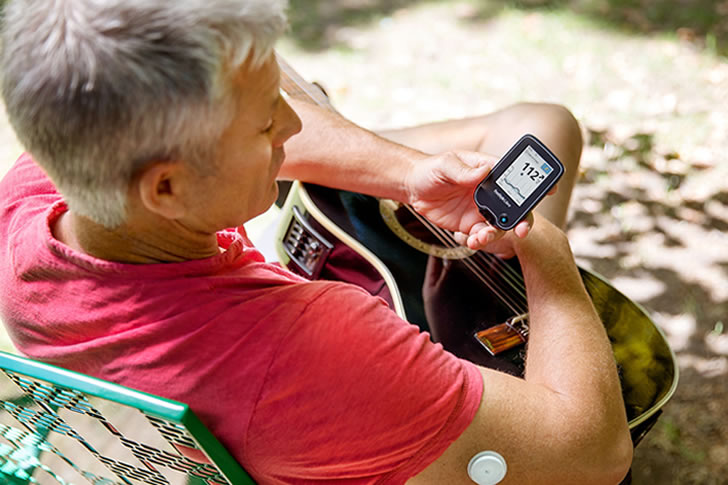Needleless Glucose Monitors for Seniors: An Overview of Budget-friendly Options
The management of diabetes requires continuous monitoring of blood glucose levels, which can be a painful and cumbersome process, especially for seniors. Traditional glucose monitoring involves frequent finger pricks, which can be painful and lead to decreased compliance. This creates a significant need for non-invasive, needleless glucose monitoring technologies. These innovative devices offer seniors a less painful and more convenient option to manage their blood sugar levels. This article explores some of the affordable needleless glucose monitors available today, providing an overview to help seniors and their caregivers make informed choices.

Understanding Needleless Glucose Monitors
Needleless glucose monitors rely on various technologies to measure blood sugar levels without skin penetration. Some of the most common technologies include optical sensors, transdermal methods, and electric fields. These devices not only eliminate the need for needles but also reduce the risk of infection and the discomfort associated with traditional methods. The market for needleless monitors is growing as advancements in technology continue to improve accuracy and affordability.
Benefits of Needleless Glucose Monitoring for Seniors
For seniors, needleless glucose monitors offer numerous advantages. Firstly, these devices provide a pain-free experience that can significantly increase the frequency of testing, leading to better management of blood glucose levels. This is particularly important for seniors who might have reduced pain tolerance or dexterity issues that make traditional testing difficult. Additionally, these devices can offer real-time feedback and continuous monitoring, which helps in detecting hyperglycemic and hypoglycemic events more quickly, potentially preventing severe complications.
Options Available in the Market
As of 2023, several companies have developed innovative glucose monitoring devices that do not require needles. While some of these devices are still under development or pending FDA approval, a few have made their way into the market:
- Flash Glucose Monitoring (FGM) Systems: FGM systems like the FreeStyle Libre offer a wearable sensor that measures glucose levels through the skin. While it involves a one-time skin insertion, it remains in place for 14 days, eliminating the need for daily finger pricks. The device allows users to scan the sensor with a reader or smartphone to get real-time glucose readings.
- Continuous Glucose Monitoring (CGM) Systems: CGM systems such as the Dexcom G6 provide real-time glucose readings by continuously monitoring glucose levels through a small sensor applied to the body. Similar to FGMs, CGMs require a sensor to be inserted under the skin, typically replaced every 10 to 14 days. However, many in the senior community find that this significantly reduces the overall pain and inconvenience associated with glucose monitoring.
- Non-Invasive Monitors: Companies like Nemaura are developing truly non-invasive options like SugarBEAT, a patch that adheres to the skin without needles and reads glucose levels through the skin. It’s important to note that while such innovations are promising, their availability and accuracy might be limited compared to minimally invasive methods.
Although the cost of needleless glucose monitors might be higher upfront compared to traditional glucometers, the long-term benefits and convenience can justify the investment. For many seniors, the reduction in pain and the ease of use are invaluable.
Government and Insurance Coverage for Needleless Glucose Monitors
In terms of affordability, it’s important for seniors and their caregivers to understand the coverage options available through insurance and government programs. In the United States, Medicare Part B covers some CGMs, like the FreeStyle Libre and Dexcom G6, for patients who meet specific criteria. Eligibility generally requires the person to be on intensive insulin therapy and to perform frequent blood glucose checks. Coverage can significantly reduce out-of-pocket costs, making these devices more accessible.
Choosing the Right Device
When selecting a needleless glucose monitor, accuracy, ease of use, and budget are crucial considerations. It’s recommended to consult with healthcare providers to discuss which device fits best with your specific health needs. Additionally, look for devices with good customer support, robust user guides, and supportive online communities, as they make the transition to using new technology smoother.
Conclusion
Needleless glucose monitors represent a significant advancement in diabetes care, particularly beneficial for seniors. As technology continues to evolve, it is expected that these devices will become more accurate, more affordable, and more widely accepted. By reducing the pain associated with glucose monitoring, these devices help improve the quality of life for seniors with diabetes and encourage more consistent monitoring and better overall management of the condition.
The future of diabetes care looks promising with these innovations, making management of the disease less invasive and more user-friendly. Seniors, caregivers, and healthcare providers should stay informed about the latest developments in this area to fully benefit from the advances in needleless glucose monitoring technologies.







Recent Comments